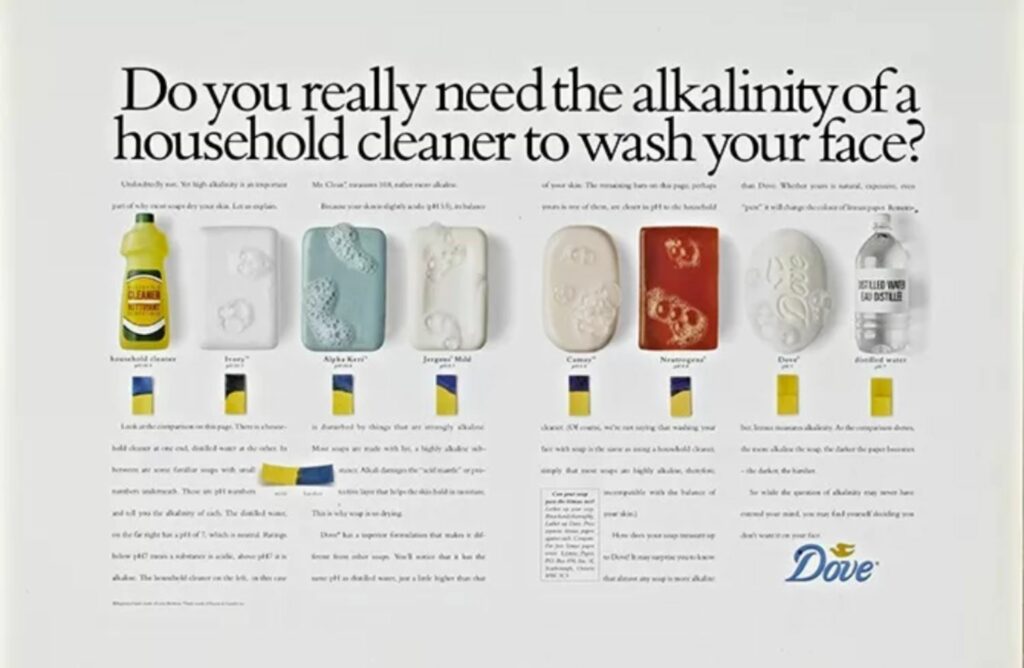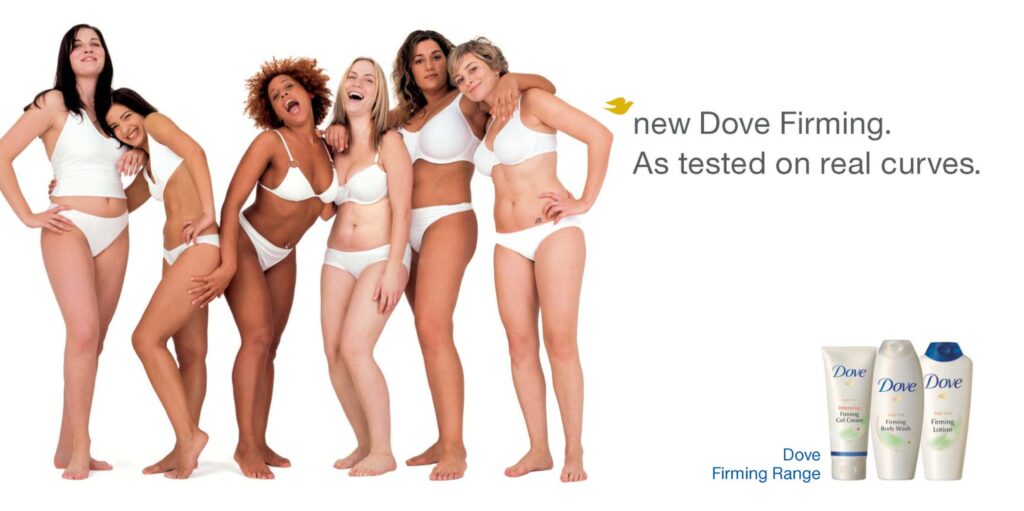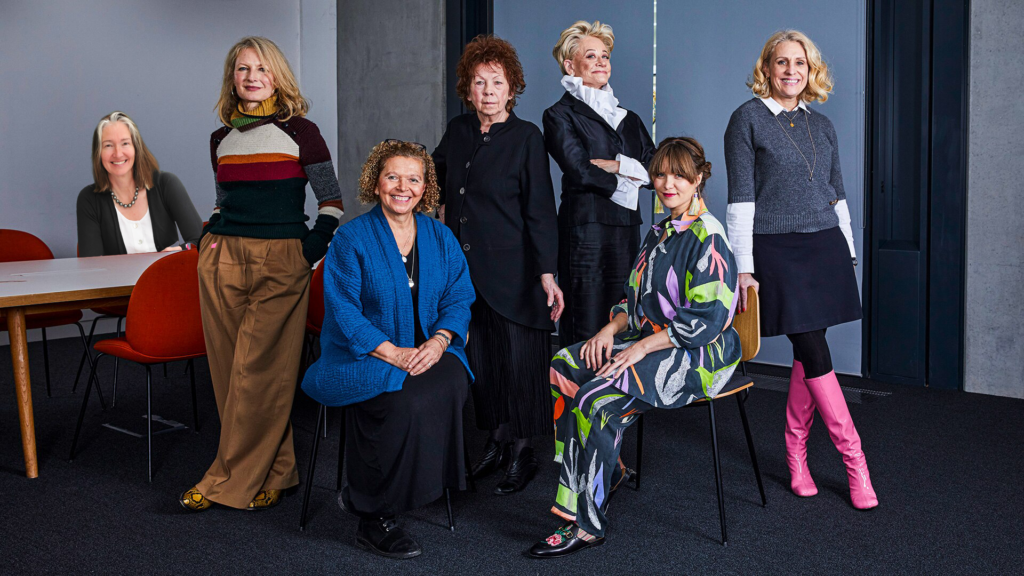
The Dove Story
Just like a white-winged dove, Daryl Fielding swooped into the SCA to share her story. Having literally written the book on brands, this is a mere five year chapter in Daryl’s impressive career, but one that changed advertising for the better.
Many people will tell you they were there at the start of Dove’s world-changing campaign for real beauty. Daryl really was one of the founding mothers of the Dove story. She helped the first seeds of research bloom into a wildly successful campaign, increasing revenue by 10% in the first year and pushing sales from $2.5 to $4 billion in ten years.
Daryl first introduced us to Dove’s rich history. ‘The bar’ is not and never has been a soap, which makes sense when you learn it was formulated to stop burns victims’ skin drying out. It’s 7% soap and one quarter cleansing cream. This fraction is impossible to ignore in Ogilvy’s first television advert. In 1957, TV advertising was still in its infancy and, like a toddler with a new word, Dove’s first attempt repeated, ‘One quarter cleansing cream,’ until it lost all meaning. Repetition, according to Bill Bernbach, was the key to a great TV ad: David Ogilvy followed his advice perhaps too far. Dove’s print adverts in the same year show a woman in the bath proclaiming, ‘I’m head over heels in Dove,’ to her ‘darling’ on the phone. Different times.

But not much had changed by 1993, with litmus test print ads still focusing on the bar’s ingredients: it’s pH balanced compared to its high alkaline competitors. Snooze. Dove had shown a spark of emotional innovation in one 1979 television commercial which featured Jean Shy, a charismatically curvy antidote to what Daryl calls the 80s glamazons.
These supermodels showed no sign of stepping aside in the 90s when Dove’s USA patent was about to run out. Instead, it expanded into 70 countries and new categories, including haircare which boosted them into a beauty brand. But beauty meant young, thin, blonde and tall. Not the ‘nice but boring’ girl at the party, who Daryl says Dove personified: people would be waiting for her to leave so the real fun could start.
While Dove made up ⅓ of Unilever’s sales, customers were bored of their washed up ads and there were no more categories or countries to expand into. So Dove’s new Global Brand Director, Brazilian Silvia Lagnado phoned big brands to ask what made them so iconic. Apple said creativity and Nike said empowerment, but what did Dove stand for?
This is where Daryl and her team stepped in to create brand values for Dove that echoed Nike and Apple’s strong emotional attachment and social relevance. As most of us do in early research stages, they looked at the competition. Skincare brands like L’Oréal, Neutrogena and Shiseido had homogenous ads full of young, thin, retouched girls who ‘all made the women in the room feel really shitty’. This, Daryl says, was the beginning of an insight.
To find a better way to market skincare, Daryl and her team spoke to iconic feminist psychologists and authors like Susie Orbach and Gloria Steinem who agreed that self-care can and should boost self-esteem but beauty stereotypes were narrow and damaging.
To begin expanding views of beauty, the men in senior positions at Unilever needed recruiting. They said no. Daryl and her team persuaded them with a ‘secret project’ exposing their wives and daughters’ insecurities. They used Billy Preston’s song You Are So Beautiful and reduced the men to tears. She said, ‘You’d never be allowed to do it today,’ but it worked! Now they had to craft the first campaign.

While the first photographs they shot were a disaster, Daryl learnt a valuable lesson in admitting you’re wrong, simplifying and starting again. Even when you’re running out of time. The resulting campaign, shot by Rankin in April 2004, changed everything. From unprecedented worldwide press coverage to huge sales increases (700% in the UK, 200% in Germany) it was safe to say the ‘Campaign for Real Beauty’ was a success.
But it didn’t stop there. Oprah got involved, a website was created, in 2004 terms they took over the world. More recent Dove campaigns show their credible change has continued to evolve and be relevant, like 2013’s Real Beauty Sketches, 2015’s Evolution—a predecessor to 2021’s Reverse Selfie which I showed to children in my past life as a primary school teacher.
With social media impacting body image, Daryl agreed that unrealistic standards will always be a problem but I believe her part in Dove changing them for the better is admirable. I was 13 in 2004 when the campaign began and I shudder to think how much worse I’d feel if real bodies continued to be censored from advertising; we all buy soap (or ¼ cleansing cream) but we’re not all young, blonde, thin and tall. Daryl might be 6’1” but her risk-taking contribution to the Dove story is colossal.
She taught us to back up your research, change perspective if it’s not working (even at the last minute) and understand the power that advertising has to change people’s minds.
It’s impossible not to feel emotional when faced with adverts like Cost of Beauty (recalling the song from Daryl’s secret persuasion project, covered by Self Esteem of course) but Dove continues to research and make real change. Thanks to the work of Daryl and her team in the early 2000s, I hope I can do the same.












